The best gear ratio for fishing reels depends on the technique and target species. For slower presentations and heavy lures, a low gear ratio (5.1:1 – 5.4:1) is ideal. For general use, a medium gear ratio (6.1:1 – 6.4:1) offers versatility. For fast retrieves and burning lures, a high gear ratio (7.1:1 – 8.1:1) is preferred.
The best gear ratio for spinning reels is 6.0:1, for baitcasters is 6.4:1, for trolling reels is 5.0:1, and for spincast reels is 4.0:1.
Every fishing reel has a gear ratio, and the marketing makes a big deal about it. But what is the best gear ratio, and why does it matter?
Picking the correct gear ratio for your needs will go a long way to help you catch more fish and enjoy your fishing.
Different gear ratios impact the speed of retrieve and the reel’s torque – so you want to have a clear view of what type of fish species you are targeting and what kind of bait/lure you will be using. If you intend to catch multiple species, you may want to consider getting several different reels or selecting a more versatile gear ratio.
Let’s dive in!
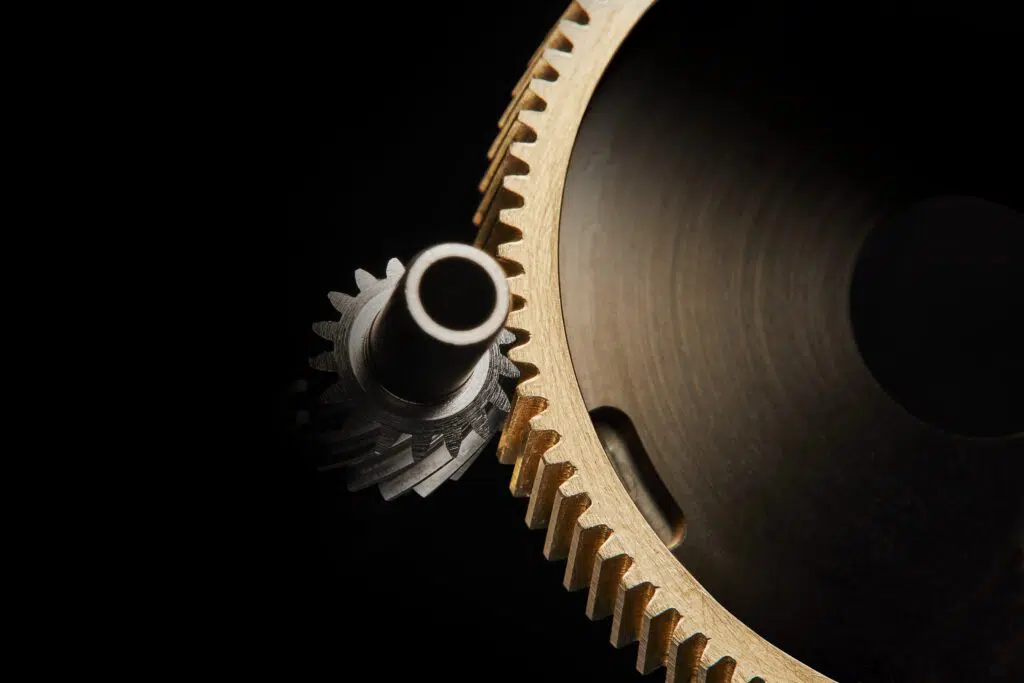
Table of Contents
What is the Gear Ratio of a Fishing Reel?
The gear ratio is used to judge the retrieval rate and how much effort the fisherman needs to turn the handle to retrieve their bait.
For every revolution of the handle, the spool will spin by multiple times. So for a gear ratio of 6.0:1, this means that for one revolution of the handle, the spool will spin six times.
The gear ratio is determined by the comparative size between the pinion gear and the drive gear. If the drive gear has 72 teeth, and the pinion gear has 12 teeth, then that reel will have a gear ratio of 6.0:1.
This means that the larger the pinion gear (for a fixed size drive gear), the lower the gear ratio. This is why lower gear ratio reels have more power that can be applied through the handle.
- Low Gear Ratio – 4.0:1 to 6.0:1
- Medium Gear Ratio – 6.0:1 to 8.0:1
- High Gear Ratio – 8.0:1 to 10.0:1
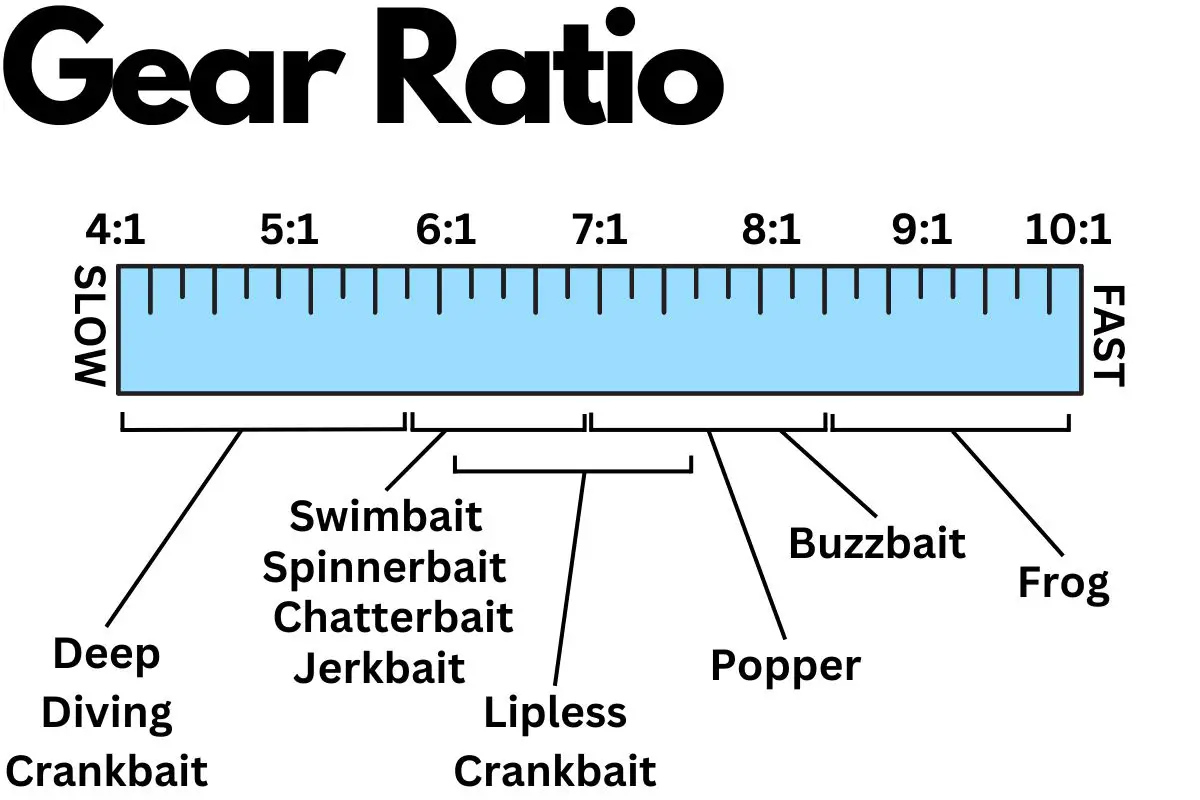
Low Gear Ratio
You will want a lower gear ratio for slower retrieves like live bait or deep diving crankbaits.
You will also need a lower gear ratio for fishing reels that provide a lot of torque, like a big game fishing conventional reel.
Low gear ratio reels have the most torque and are perfect for slow, heavy baits that require a lot of effort to retrieve.
Reels with a low gear ratio will often have a two speed gearing system – this allows you to apply full torque when fighting a big fish, and then switch to a fast retrieve mode when you are retrieving an empty hook.

Medium Gear Ratio
Medium gear ratios are the most common on popular fishing reels. They are the most versatile – you can always slow down or speed up your retrieve to give similar results to the other reels.
They are ideal for medium-depth crankbaits, spinnerbaits with smaller blades, and castable umbrella rigs.
High Gear Ratio
You will want a higher gear ratio when you want a faster retrieve such as a spinnerbait. High-speed reels are also helpful when you need to retrieve your line quickly, such as moving over sea beds or low resistance lures.
They are perfect for topwater lures, jigs, and lipless crankbaits. High-speed reels are becoming increasingly popular among bass anglers as the technology keeps advancing.
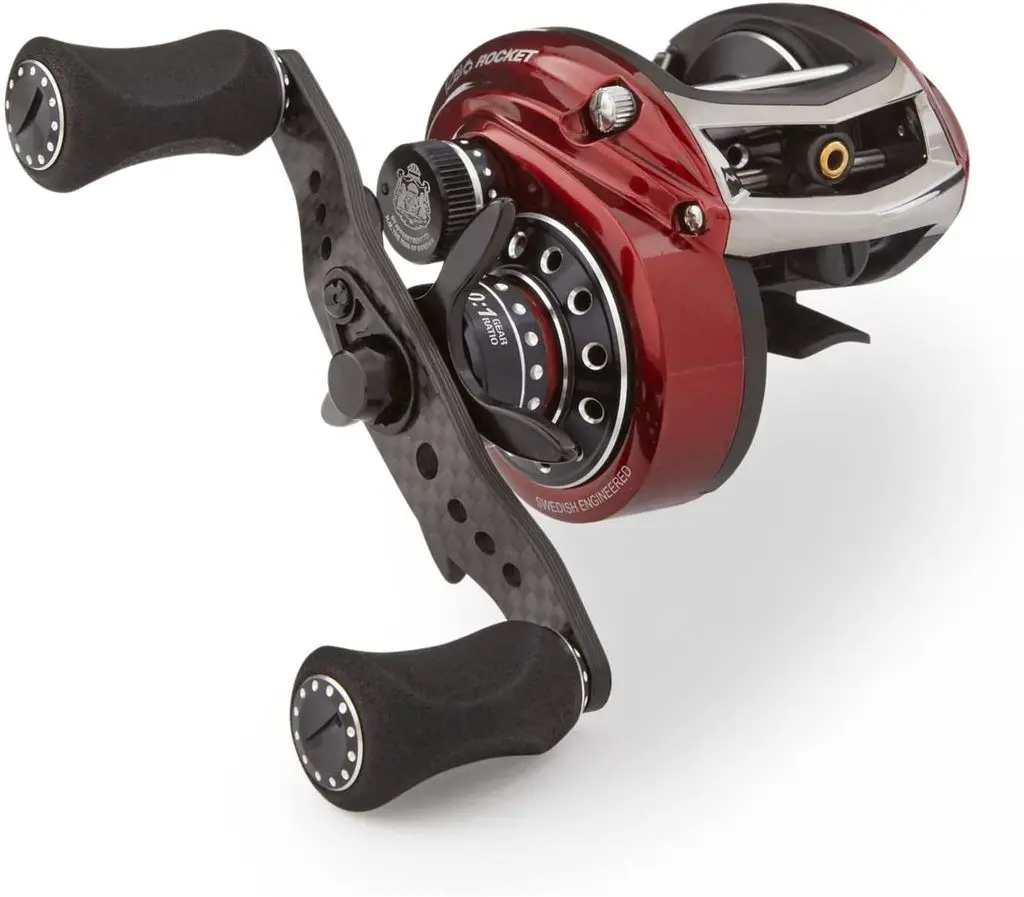
What About the Retrieve Rate?
The retrieve rate is a function of the gear ratio and the diameter of the spool. For example, a low speed reel with a large spool can still have a good retrieve rate. The problems occur when you get a low speed reel with a small spool, which is more likely to happen in panfish reels or 1000-sized models.
For bass fishing, 2500 is the most popular sized spinning reel. I like to have a retrieve rate of over 30 inches per crank. But for some lures you may want up to 40 inches per crank. Understanding the type of fishing and the action of the lure is important when deciding on the reel’s specifications.
In my experience, it is better to look at the retrieve rate and the max drag, rather than trying to infer power and speed from the gear ratio.
Gear Ratio by Fishing Reel Type
| Type of Reel | Best Gear Ratio |
| Spinning Reels | 6.0:1 |
| Baitcasting Reels | 6.4:1 |
| Conventional Reels | 5.0:1 |
| Spincast Reel | 4.0:1 |
| Electric Reel | 3.0:1 |
Spinning Reels
The best gear ratio for spinning reels is 6.0:1.
The best gear ratio for spinning reels is a difficult question to answer – spinning reels are famous for being versatile and are available in almost all gear ratios.
From my point of view, spinning reels are the workhorse of the fishing reel world, and because of this, you should select a gear ratio that is also a workhorse.
This allows you to use this reel in various applications from spinnerbaits, jerkbaits, topwater lures, and even jigging.
If you intend to fish for a specific species or lure type, you may want to focus more intently on that requirement.
If you ask some anglers they will say that any spinning reel with a gear ratio higher than 7.0:1 will not have enough torque to handle large fish, but this is no longer true with newer technology and designs available. My recommendation for a top-class spinning reel is the Pflueger President.
Baitcasting Reels
The best gear ratio for baitcasting reels is 6.4:1.
Baitcasting reels tend to have a much higher gear ratio than spinning reels, and there is a simple reason: they have a smaller diameter spool. Considering the difference in diameter spools, you will realize that a single turn of a baitcasting spool will retrieve significantly less fishing line than a spinning reel.
This is why baitcasting reels can have such high gear ratios.
A 6.4:1 baitcaster is the most common gear ratio available on the market, and as with above, it gives you the most versatility in lure types and presentation options. My recommendation for a baitcaster is the Shimano Curado, which I have owned and used for over a decade.
You can also get high-speed baitcasters like the Revo Rocket with a gear ratio of over 10.0:1, which are designed exclusively for fast-moving twitchbaits.
Conventional Reels
From my point of view, the best gear ratio for a conventional reel is 5.0:1, with a two-speed gearing option if you are hunting gamefish.
I use conventional reels most often when I target big game fish such as sailfish or marlin. This requires a very large and specialized reel.
These types of reels have a very large diameter spool and can retrieve a lot of fishing line in a single revolution. This means they can have lower gear ratios while maintaining high retrieve rates.
Big game specialist reels like a Shimano Tyrnos often come with a two-speed gearing system with a 5.0:1 for general retrieval and a high power 2.0:1 for when you are fighting monsters.
If you are chasing smaller but still speedy saltwater species like mackerel or barracuda, you will want a much higher gear ratio like 7.0:1.
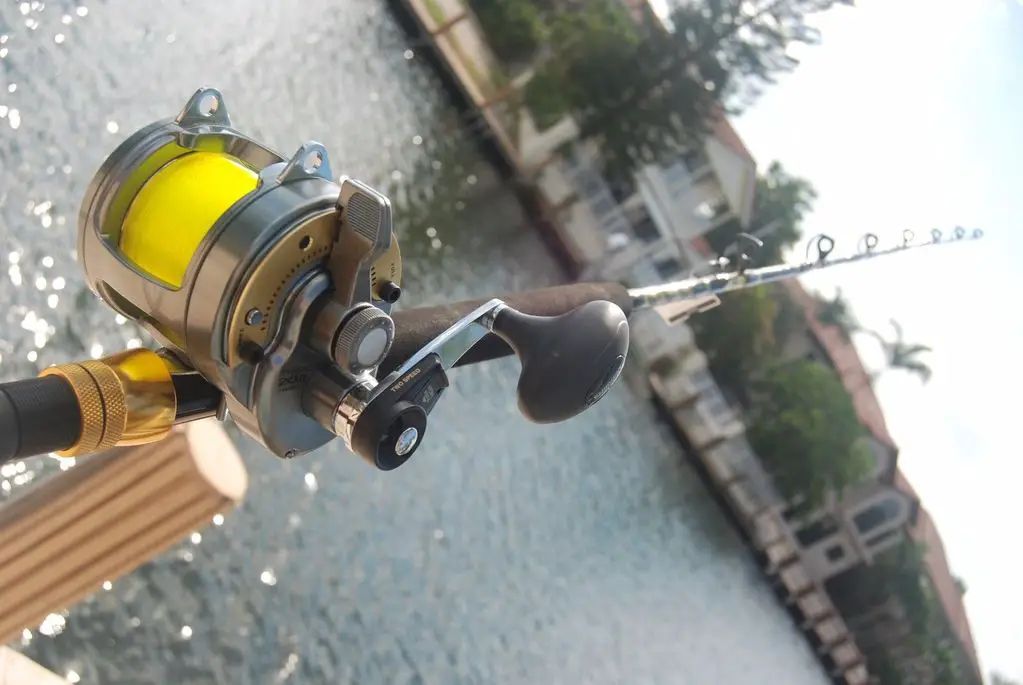
Gear Ratio by Fish Species
| Fish Species | Best Gear Ratio |
| Bass | 6.4:1 |
| Panfish | 5.2:1 |
| Trout | 8.0:1 |
| Catfish | 6.0:1 |
| Redfish | 6.0:1 |
| Walleye | 4.5:1 |
| Crappie | 5.2:1 |
| Tuna | 6.0:1 |
| Shark | 4.2:1 |
| Sailfish | 5.0:1 |
| Marlin | 3.0:1 |
Bass
The best gear ratio for bass is 6.4:1, particularly for baitcasting reels which have become the primary fishing reel among bass anglers.
If you are fishing with buzzbait or over seabeds and structure that you need to retrieve exceptionally quickly, you will want to increase this to a 7.1:1 gear ratio.
There are even newer bass reels on the market with gear ratios over 9.0:1. My personal recommendation for a baitcasting reel for bass is the KastKing Royale Legend II and a spinning reel for bass is the Abu Garcia Revo SX.
Trout
The best gear ratio for trout is 8.0:1.
This gives you a lot more control during your retrieve. If you use a topwater lure and need to retrieve the slack between rod twitches quickly, then the high-speed gear ratio is a big advantage.
For other lure retrieval speeds, you may also want to take a more workhorse all-purpose gear ratio in the 6:1 to 7:1 range.
I would recommend a Daiwa BG as a top-quality Trout spinning reel.
Redfish
The best gear ratio for redfish is 6.0:1.
This gives the most versatility and widest range in lure options. This reel gear ratio will be ideal if you are jigging or sight fishing for red drum.
You could consider a higher range gear ratio, but this will prevent you from using too many deep-diving crankbait or large blade spinnerbaits. I suggest you pick a Penn Battle II spinning reel for redfish.
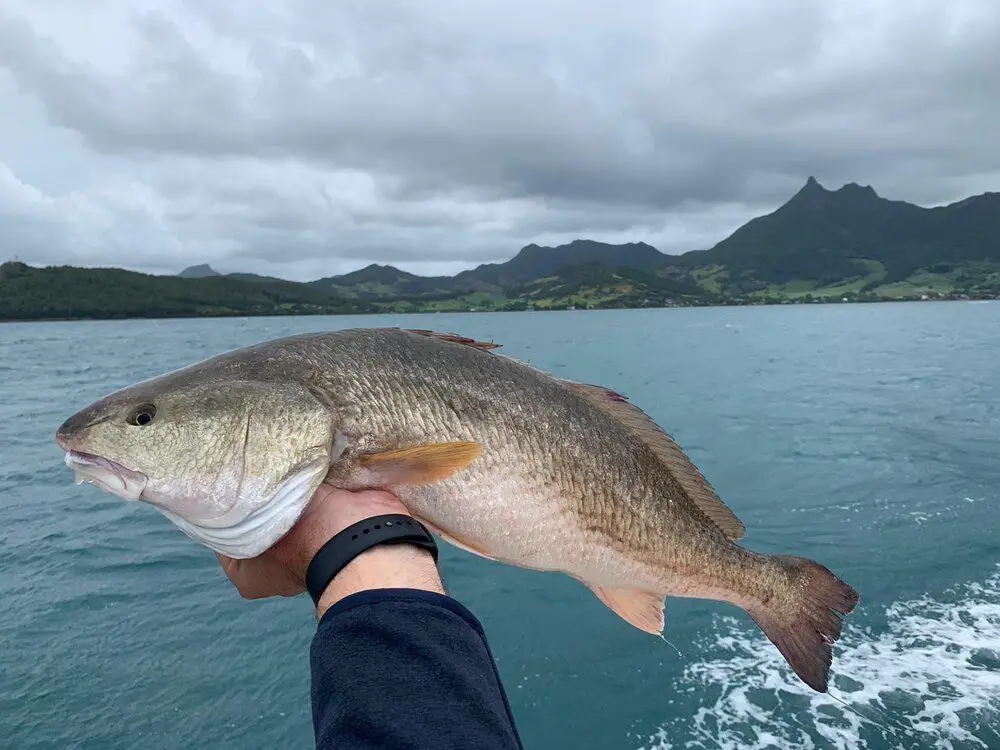
Walleye
The best gear ratio for walleye is 4.5:1. A lower gear ratio is preferable if you are jigging for walleye.
Walleye can be timid, so you don’t need to retrieve a super fast buzzbait past them.
For walleye, the drag and the anti-reversing features are more important than the gear ratio, so I wouldn’t spend too much time focusing on this as long as you are in the general ball park range.
My recommendation for a walleye reel is the Penn Pursuit.
Crappie
The best gear ratio for crappie fishing is 5.2:1.
Crappie fishing uses very light fishing line, similar to other panfish. This often means that the reels are extremely small, resulting in smaller internal gearing. This reduces the complexity of an option within a small reel body and normally comes with lower gear ratios.
A gear ratio of mid 5:1 is more than enough to handle anything a crappie can throw at you, so I wouldn’t hesitate to select this specification.
Gear Ratio by Lure Type
| Type of Lure | Best Gear Ratio |
| Spinnerbait | 6.3:1 |
| Crankbait | 5.0:1 |
| Topwater Lures | 7.0:1 |
| Jerkbait | 6.3:1 |
| Plastic Worm | 6.1:1 |
| Jig | 4.5:1 |
| Buzzbait | 7.0:1 |
Spinnerbaits
The best gear ratio for spinnerbaits is 6.3:1.
This allows both small and large blades to be retrieved without needing to speed up or slow down too significantly.
There is a wide range of spinnerbaits available, all of which come with different water resistance and target retrieval speeds, so please judge what is right for your own needs.
Crankbaits
The best gear ratio for crankbaits is 5.0:1.
This is a lower speed gear ratio than a lot of other applications.
Deep diving crankbaits have very large nose lips to get the lure down far enough – this lip also put a lot of water resistance against the lure during the retrieve.
You will need to retrieve the lure more slowly and have a reel with more torque through a lower gear ratio.
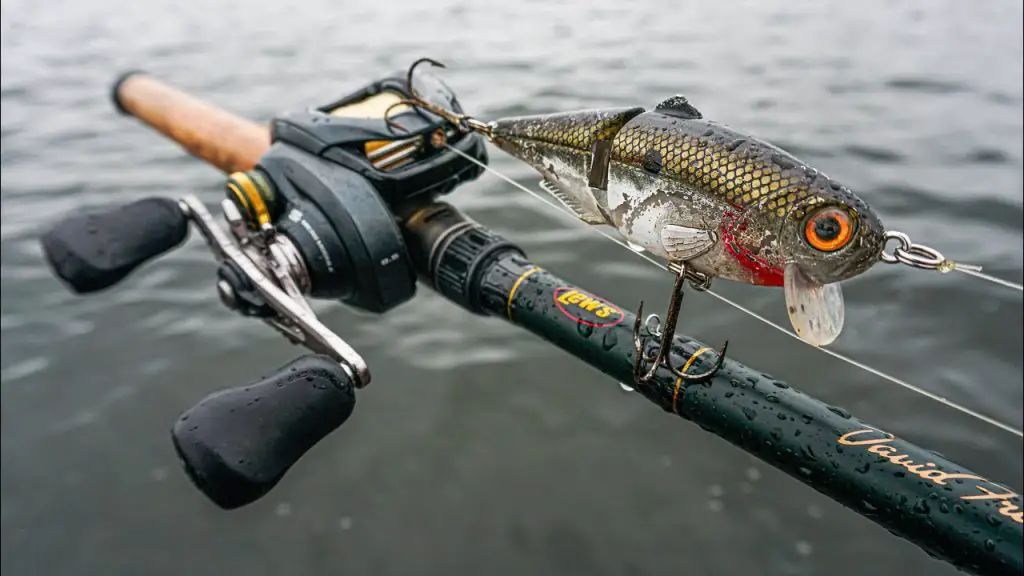
Gear Ratio Video
Conclusion
Gear ratios may seem confusing, but they don’t have to be. You can always speed up and slow down your retrieve slightly depending on what lure you are retrieving. I hope we have helped to explain what gear ratio you may be interested in buying.
In summary:
- The best gear ratio for spinning reels is 6.0:1
- The best gear ratio for baitcasters is 6.4:1
- The best gear ratio for overhead reels is 5.0:1
- The best gear ratio for spincast reels is 4.01:1
- The best gear ratio for bass is 6.4:1
If you want more information, Wired2Fish also have a good article for anglers.
If you have any thoughts or questions to share, please leave a comment below.
Happy fishing!
